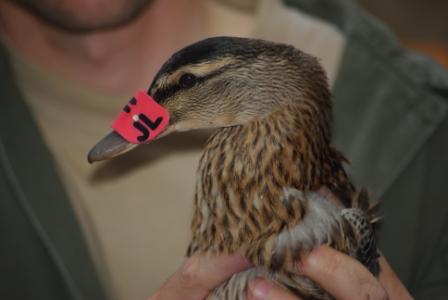It is a common practice to release of animals, such as partridges, ducks, quails, and pheasants for the purposes of hunting or restocking. The number of mallards released per year today in Europe is in the millions, with the French contribution estimated to be 1, 400, 000 individuals.
 In the Camargue alone, the numbers recorded in January for the 2001 – 2006 period varied between 29,000 and 59,000, whereas the estimated number of mallards released in that region per year is at least 30,000.
In the Camargue alone, the numbers recorded in January for the 2001 – 2006 period varied between 29,000 and 59,000, whereas the estimated number of mallards released in that region per year is at least 30,000.
The goal of the programme, “Effect of massive releases of individuals on the natural populations: the case of the mallard (Anas platyrhynchos)” carried out by the French National Hunting and Wildlife Agency (ONCFS) since 2008, in partnership with the Tour du Valat and the CEFE-CNRS, is to determine the consequences of these large-scale introductions of individuals bred in captivity on the dynamics of the natural populations. They are trying to answer questions, such as: What percentage of the mallards released survives through the hunting season? Are they able to migrate or reproduce?
This programme is also attempting to evaluate the consequences of these introductions in terms of the transmission of pathogens between duck breeding farms and the wild habitat, as well as the genetic and morphological integrity of the wild population. To accomplish these goals, the ONCFS is working in collaboration with Swedish, Dutch, and Czech teams.
Initial findings suggest that there is a very low survival rate among the mallards released. Two explanations have been advanced: their great vulnerability at the start of hunting season, along with the fact that they have a hard time nourishing themselves.
Contact : Jocelyn CHAMPAGNON